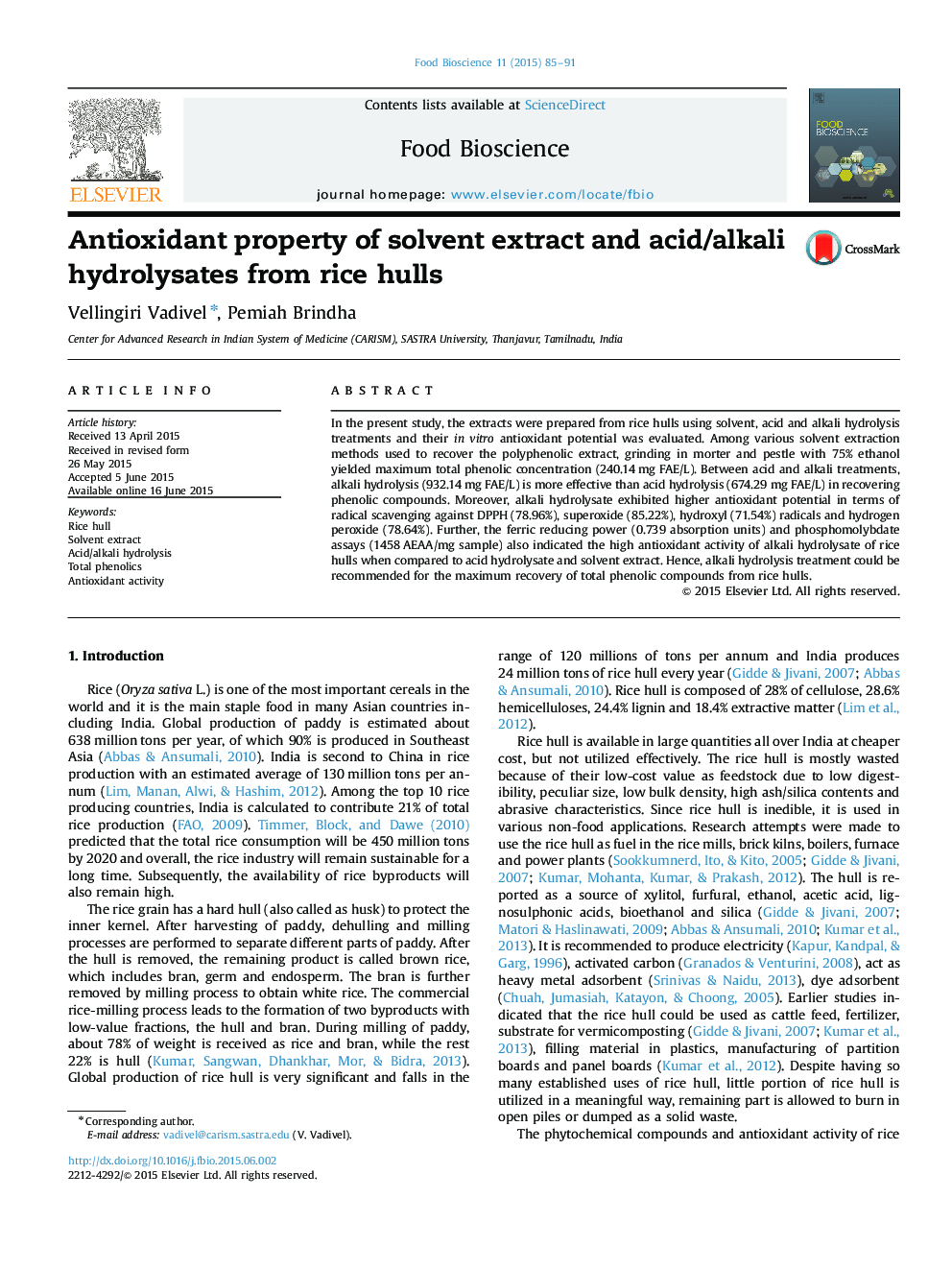| Article ID | Journal | Published Year | Pages | File Type |
|---|---|---|---|---|
| 19691 | Food Bioscience | 2015 | 7 Pages |
In the present study, the extracts were prepared from rice hulls using solvent, acid and alkali hydrolysis treatments and their in vitro antioxidant potential was evaluated. Among various solvent extraction methods used to recover the polyphenolic extract, grinding in morter and pestle with 75% ethanol yielded maximum total phenolic concentration (240.14 mg FAE/L). Between acid and alkali treatments, alkali hydrolysis (932.14 mg FAE/L) is more effective than acid hydrolysis (674.29 mg FAE/L) in recovering phenolic compounds. Moreover, alkali hydrolysate exhibited higher antioxidant potential in terms of radical scavenging against DPPH (78.96%), superoxide (85.22%), hydroxyl (71.54%) radicals and hydrogen peroxide (78.64%). Further, the ferric reducing power (0.739 absorption units) and phosphomolybdate assays (1458 AEAA/mg sample) also indicated the high antioxidant activity of alkali hydrolysate of rice hulls when compared to acid hydrolysate and solvent extract. Hence, alkali hydrolysis treatment could be recommended for the maximum recovery of total phenolic compounds from rice hulls.
